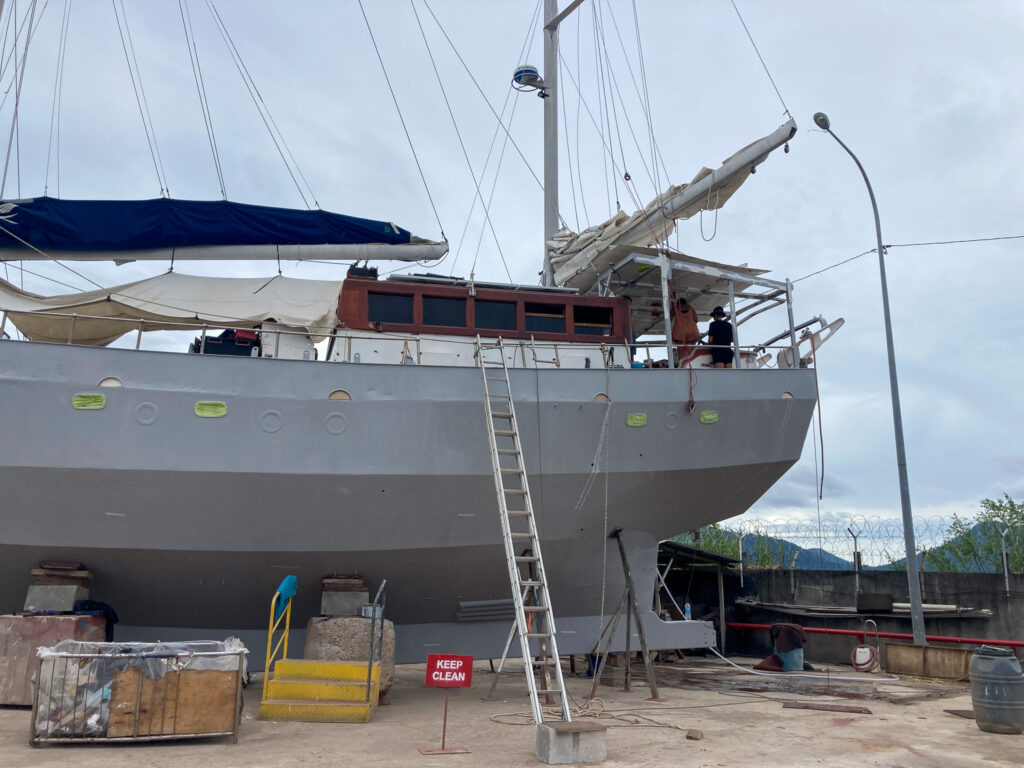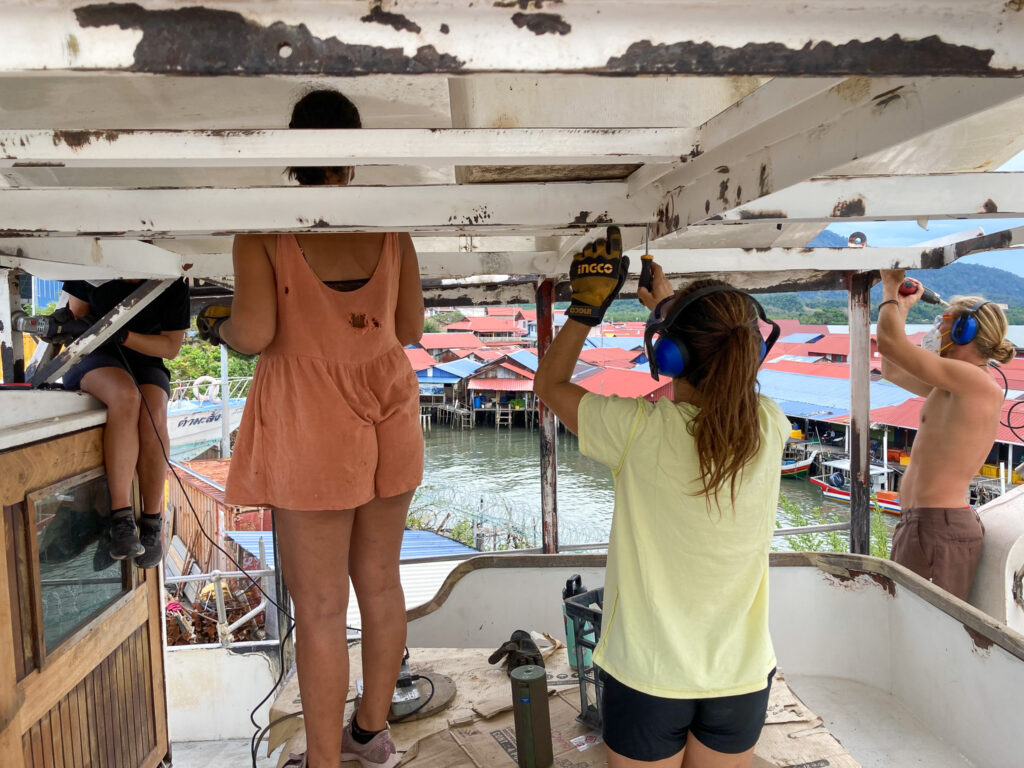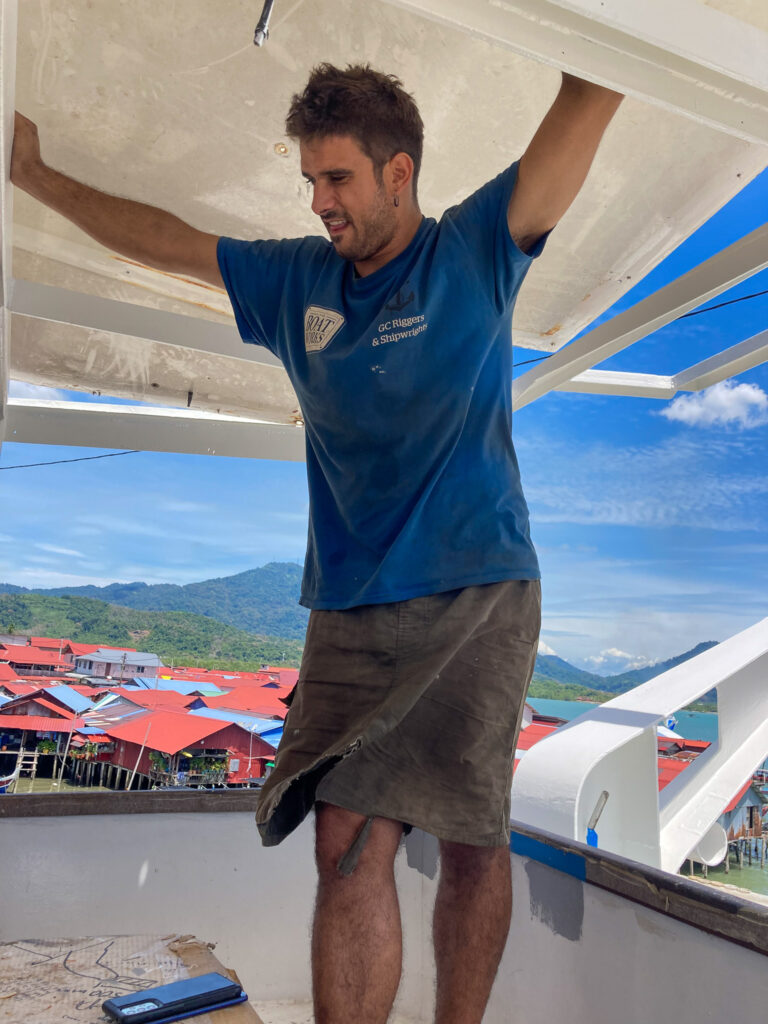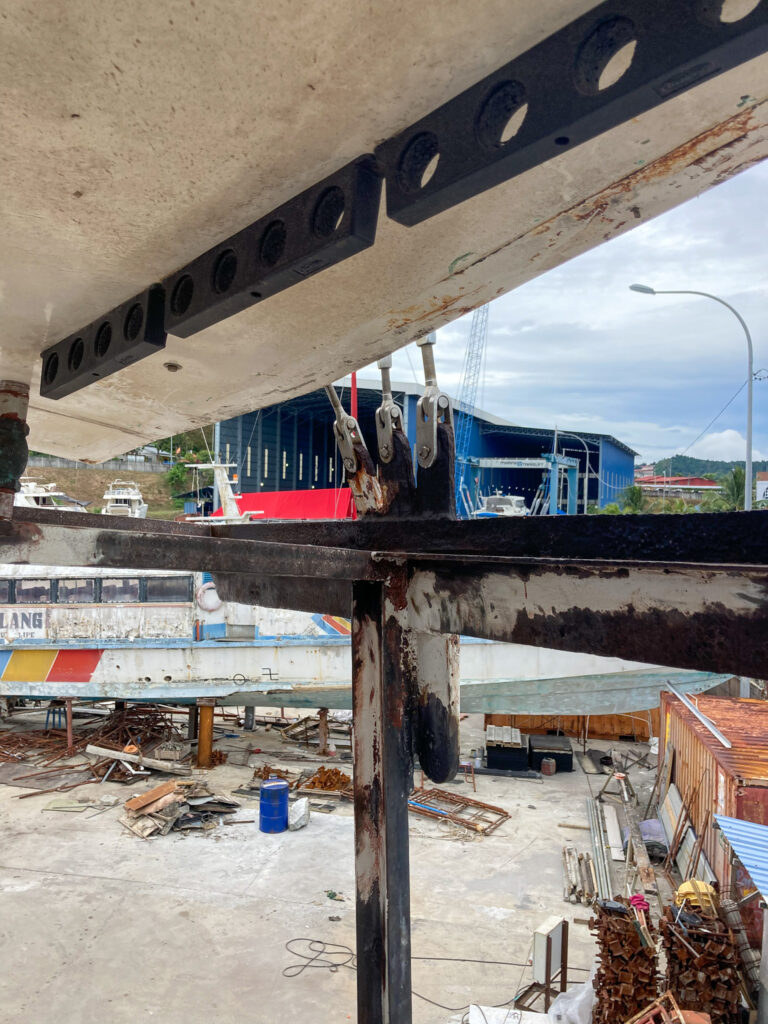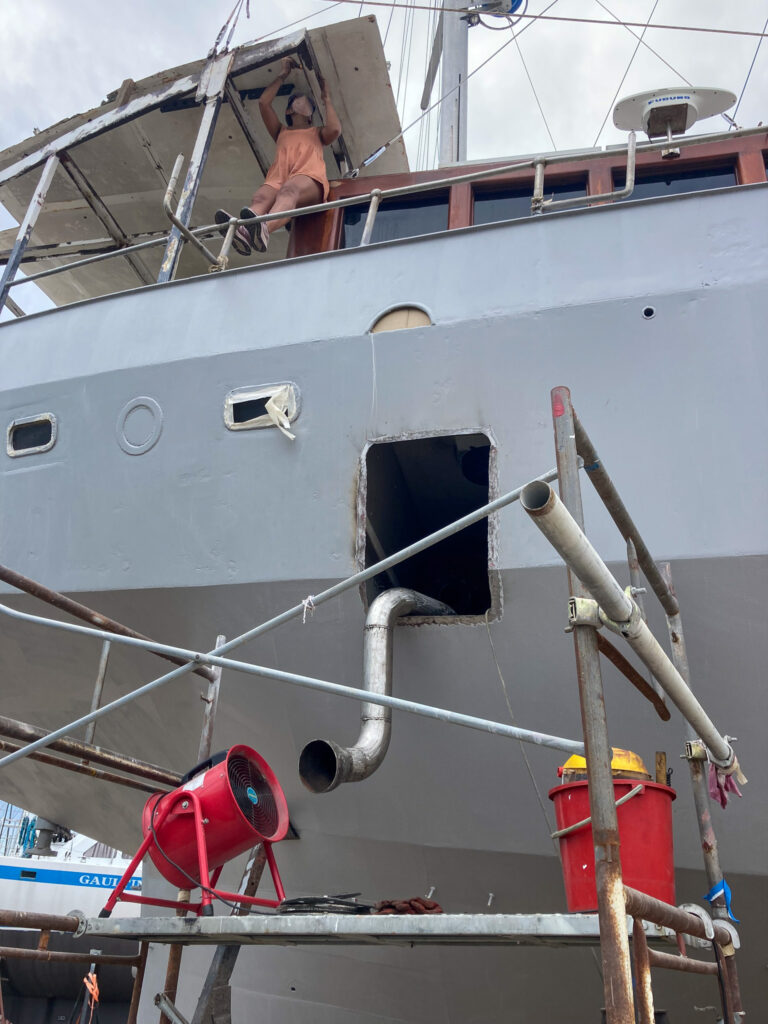After arriving in Langkawi and getting settled into my new home on SV Millennium, the days began blending together as I fell into the daily routine. The mornings normally consisted of breakfast, coffee, and a workout or walk followed by a group meeting at 9:30 am. Nate would go over the schedule for the day and what we needed to get done to get the boat back in the water. The list of things left to do seemed simple, but I knew the nature of boat projects is that every little thing can grow into an exponentially larger project.
Although Nate wasn’t a first-time boat owner, it was clear to me that he had bitten off much more than he could chew with this boat. SV Millennium is a large, steel sailboat and the problem with any steel boat is that the environment is constantly trying to destroy it. The previous owner of the boat was diagnosed with terminal cancer and had spent the last few years living his dream of surfing the world’s best waves, understandably neglecting the regular maintenance needed to protect the underlying metal structure. Everywhere you looked, there was rust. It had even eaten away the inside of the water tanks which were being rewelded when I arrived.
Aside from the rust, it seemed the boat already had some critical system issues. Since the boat was purchased in Phuket the short trip to Langkawi was already wrought with problems. Almost every critical system was powered by the generator, even the bilge pumps which are normally connected directly to the batteries to always operate in case of water intrusion. There was also no way to transfer the power to use the main engine instead of the generator. To drain the bilge of water throughout the trip, the generator was turned off and on.
The old owner of SV Millennium had equipped the boat with items repurposed from commercial fishing operations including the anchoring system. Instead of a standard marine windlass to raise and lower the anchor, an electric winch was used to roll the anchor chain around a large drum. Since the winch was likely originally used to raise and lower cargo, there was no manual override release to drop the load. So, when the crew arrived in Langkawi and couldn’t start the generator, they had to manually deploy a backup anchor weighing upwards of 300 lbs. Similarly, the primary and backup anchors were also repurposed from a fishing fleet and it seemed they had no other mechanical advantage other than being ridiculously heavy. Not to mention the anchor chain itself was made of four different types of chains of varying sizes.
I asked Nate about how he negotiated the selling price of the boat and if the cost of repairs was identified during the survey taken out of the price. He was a little too optimistic and took the seller’s word for what would need to be done and decided not to get a survey, instead offering a much lower price than what was asked. This would be like buying a house without getting it inspected. Plus, buying from a dying man, desperate to get home to his family meant there is likely much more to do than was advertised in the negotiations. I had a feeling that we had only seen the tip of the iceberg of what was needed for repairs.
But, every journey begins with one step at a time so we began chipping away at what needed to be done. I was put on the rust removal team and worked with Will, Joni, and Angi to remove rust in the area surrounding the aft table. Anywhere where it looked like the paint had bubbles, rust was sure to be underneath. We spent the day constantly grinding and chipping away until we could reveal the shiny steel below then moved on to the next spot.
Lunch would be delivered between 1:00 pm and 3:00 pm, then we would continue until about 5:00 pm or 6:00 pm. This continued on every day for my first week: wakeup, de-rust, lunch, de-rust, dinner, sleep, repeat. Although Nate indicated just two weeks in the shipyard, I knew it was likely two months or more given our pace and skill. The reality was, most of us had no experience working on boats in this fashion and we were truly unskilled laborers working for the equivalent of $20 per day of food. Skilled labor, like welding and electrical, was contracted out but most of the manual labor was left to us.
I spent my days chatting with Joni and Angi and we shared both our excitement and fears of joining a project like this. We were all excited for the trip ahead, seeing the most remote parts of Indonesia, world-class diving and surfing, and building a community of like-minded adventurers. When talking about our fears about coming on board, both girls mentioned they were most nervous about the social aspects. What if there was drama and we didn’t all get along? For me, my biggest fear was that we would never actually leave the shipyard.
